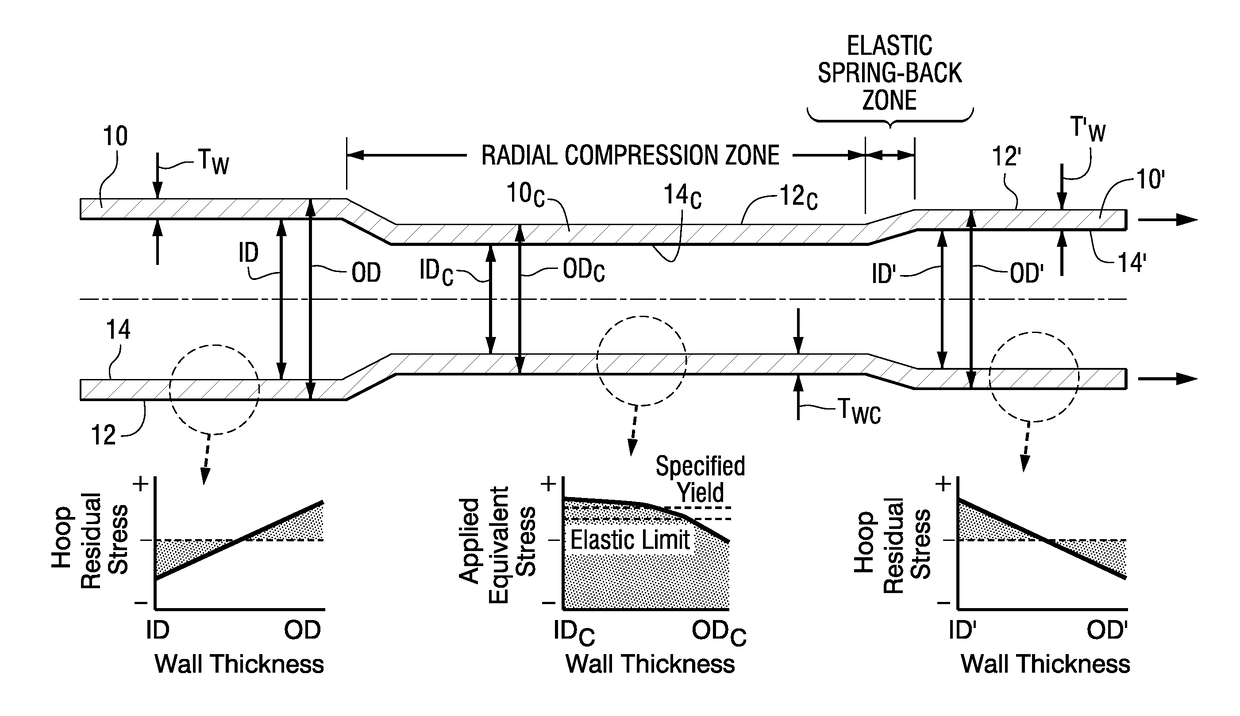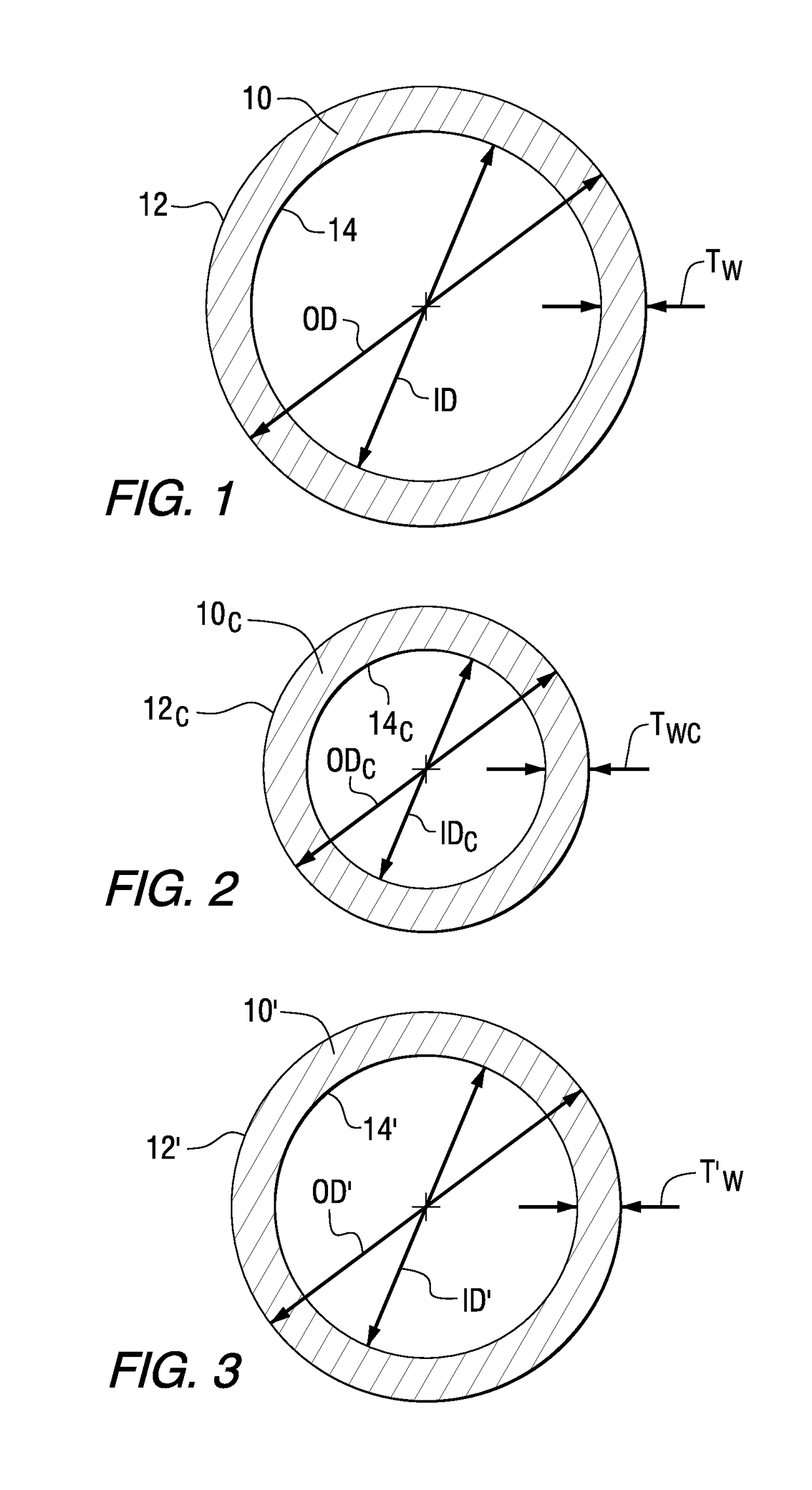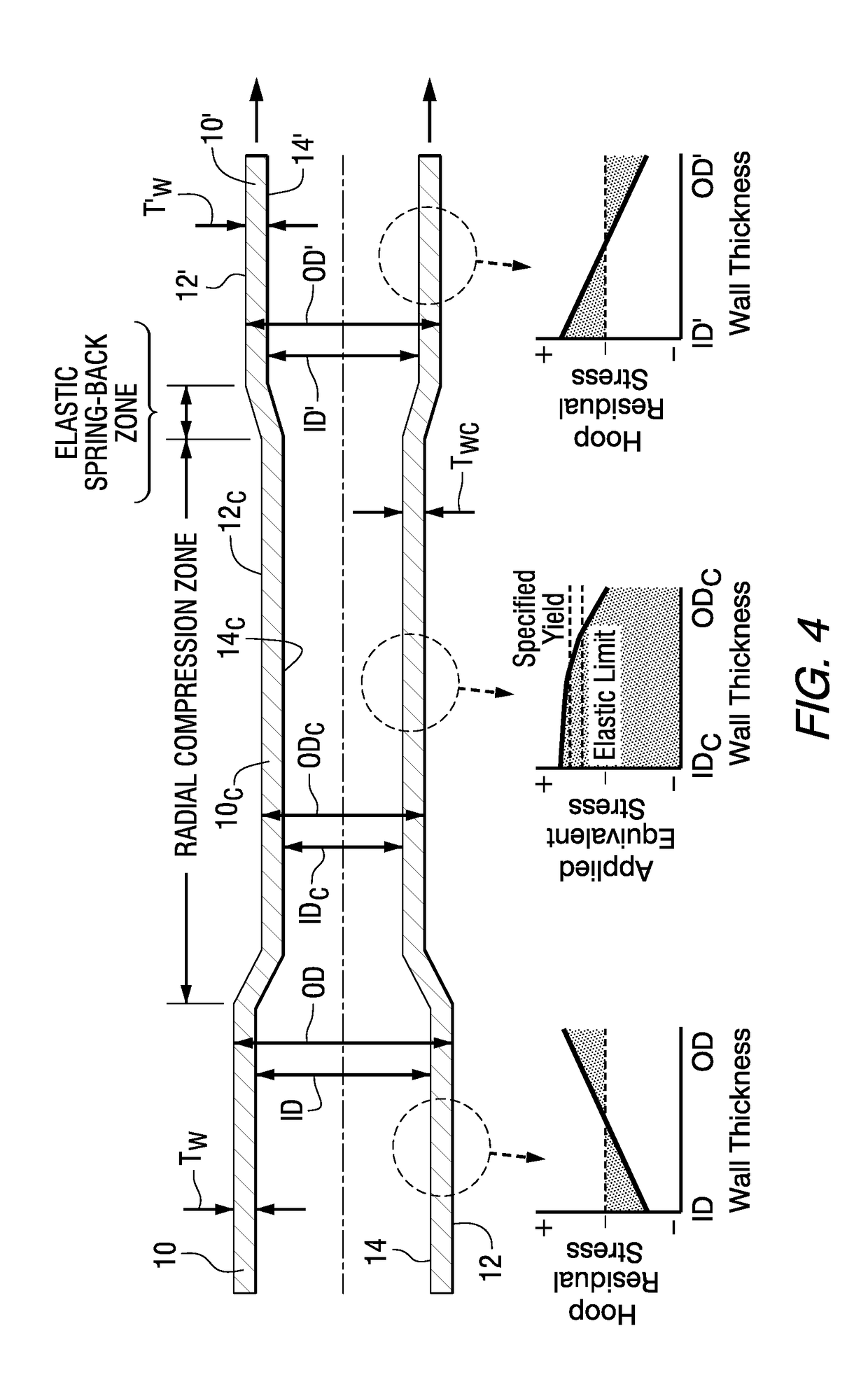Compressive forming processes for enhancing collapse resistance in metallic tubular products
a compression forming and tubular product technology, applied in heat treatment furnaces, heat treatment equipment, furnaces, etc., can solve the problems of reducing the collapse resistance of the hoop stress profile is repeated, so as to enhance the collapse resistance, and enhance the collapse resistance
- Summary
- Abstract
- Description
- Claims
- Application Information
AI Technical Summary
Benefits of technology
Problems solved by technology
Method used
Image
Examples
example 1
[0053]Rotary straightened 14″×0.820″ sample 125 grade steel tubes were subjected to a radial compression process in accordance with an embodiment of the present invention. The collapse pressures of the resultant products are shown in FIG. 12. As shown in FIG. 12, the bottom dashed line represents the minimum collapse pressure of 9,230 psi for API Q125 grade tubes available today, the next dashed line represents the minimum collapse pressure of 10,530 psi for 125 High Collapse grade tubes available three years ago, the next dashed line represents the minimum collapse pressure of 11,580 psi for 125 High Collapse grade tubes available today, and the top dashed line represents the minimum collapse pressure of 12,540 psi for 125 High Collapse grade tubes subjected a radial compression process in accordance with an embodiment of the present invention. Thus, the top dashed line in FIG. 12 corresponds to a target collapse pressure achieved with a radial compressive forming process in accord...
example 2
[0054]Rotary straightened 16.25″×0.817″ sample 125 grade steel tubes were subjected to a radial compression process in accordance with an embodiment of the present invention. The collapse pressures of the resultant products are shown in FIG. 13. As shown in FIG. 13, the bottom dashed line represents the minimum collapse pressure of 5,960 psi for API Q125 grade tubes available today, the next dashed line represents the minimum collapse pressure of 7,510 psi for 125 High Collapse grade tubes available three years ago, the next dashed line represents the minimum collapse pressure of 8,210 psi for 125 High Collapse grade tubes available today, and the top dashed line represents the minimum collapse pressure of 8,860 psi for 125 High Collapse grade tubes subjected a radial compression process in accordance with an embodiment of the present invention. Thus, the top dashed line in FIG. 13 corresponds to a target collapse pressure achieved with a radial compressive forming process in accord...
example 3
[0055]Rotary straightened 11.875″×0.582″ sample steel tubes were subjected to a radial compression process in accordance with an embodiment of the present invention. The collapse pressures of the resultant products are shown in FIG. 14. As shown in FIG. 14, the bottom dashed line represents the minimum collapse pressure of 5,630 psi for API Q125 grade tubes available today, the next dashed line represents the minimum collapse pressure of 7,070 psi for 125 High Collapse grade tubes available three years ago, the next dashed line represents the minimum collapse pressure of 8,720 psi for 125 High Collapse grade tubes available today, and the top dashed line represents the minimum collapse pressure of 8,310 psi for 125 High Collapse grade tubes subjected a radial compression process in accordance with an embodiment of the present invention. Thus, the top dashed line in FIG. 14 corresponds to a target collapse pressure achieved with a radial compressive forming process in accordance with...
PUM
| Property | Measurement | Unit |
|---|---|---|
| Fraction | aaaaa | aaaaa |
| Fraction | aaaaa | aaaaa |
| Fraction | aaaaa | aaaaa |
Abstract
Description
Claims
Application Information
 Login to View More
Login to View More - R&D
- Intellectual Property
- Life Sciences
- Materials
- Tech Scout
- Unparalleled Data Quality
- Higher Quality Content
- 60% Fewer Hallucinations
Browse by: Latest US Patents, China's latest patents, Technical Efficacy Thesaurus, Application Domain, Technology Topic, Popular Technical Reports.
© 2025 PatSnap. All rights reserved.Legal|Privacy policy|Modern Slavery Act Transparency Statement|Sitemap|About US| Contact US: help@patsnap.com



